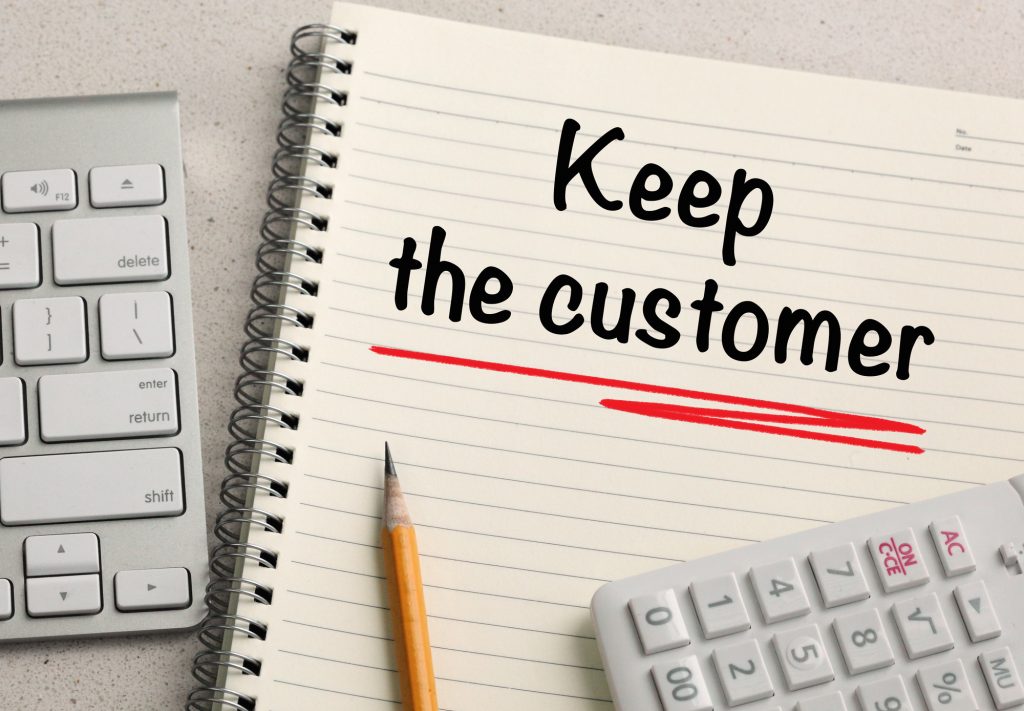
Getting a new customer can cost 5 to 25 times the cost of keeping a customer. But what’s a better way to keep a customer–retention or loyalty?
Many brands use customer retention and customer loyalty interchangeably even though they’re different processes. In this guide, we’ll start out by defining each.
But which one is better? Where should you focus your effort? The surprising answer is that you need both customer loyalty and retention.
After we discuss what each process entails, we’ll show you how to measure them and why you need to use them together.
Customer Loyalty and Retention: Definitions
The best way to define customer loyalty is to say that it inspires the growth of your brand’s customer base.
To define customer retention, let’s simply say that it reduces the decline of your brand’s customer base.
Let’s look at some examples of each.
Customer Retention Examples
Does your brand use punch cards? Or have you ever received a punch card? This is a classic example of customer retention.
The way the punchcard works is that each time customers spend a certain threshold or buy a certain item, they get a card punched. When they receive a requisite number of punches, they get something for free.
This practice reduces the chance of losing a customer. Let’s say a customer buys a bottle of perfume from a fragrance store. Their card gets one punch.
Over the next year, they fill their punchcard and then receive a complimentary bottle of perfume. If each bottle costs $30.00, and they had to buy five bottles to get a free one, the fragrance store has made $120.00 for that customer.
But what happens when the punchcard is complete? The customer might start a new one, or she might take her business elsewhere. She was retained, but without any loyalty, that retention might be finite.
Retention provides extrinsic motivation. We’ll come back to types of motivation later but remember this.
Customer Loyalty Examples
Let’s take the example of the punchcard customer. Maybe the first time she goes into the fragrance store, they don’t have the perfume she wants to buy. She tells them this, and the information gets passed up the line to the buyer.
When the store stocks the perfume, they contact the customer to let her know. This creates loyalty. She feels as though she’s been listened to, as though the store cares about her.
She returns to the store and gets a punchcard, except this time, when she fills the card, she’s eager for another, and another, and so on. She tells all her friends about the stellar service she’s received and they come in and get punchcards.
We realize that it may not be possible for a store to stock a product just because one person wants it, but in this example, it’s safe to presume that the store would listen to other customers who might also want that product.
In this example, not only is she retained, but she’s loyal. Her retention is continuous, and she acts as an ambassador, bringing in other customers. In fact, loyal customers spend an average of 66% more than customers who aren’t loyal.
We could say a retained customer isn’t necessarily a loyal one, but a loyal customer is always a retained customer.
Loyalty provides intrinsic motivation.
Now that you have an understanding of how retention and loyalty differ, let’s look into measuring them.
Measuring Retention of Customers
Measuring retention is easy if you know how to count. All you have to do is decide what length of time and/or what frequency defines a retained customer.
Are your customers retained if they shop with you for an entire year? Or do they have to buy a product ten times in order to be retained?
Once you decide how you will define retained customers, just count them up and divide by your total customers and you’ll have your retention rate.
Measuring Customer Loyalty
This is a bit trickier than measuring retention. You can’t just count ’em up. Instead, you have to decide how you’ll model loyalty and then how you’ll determine which customers fit that model.
Modeling loyalty involves examining three behaviors:
- Expansion
- Influence
- Advocacy
Expansion refers to how likely a customer is to buy more from your company. Can you up-sell or cross-sell to them?
Influence refers to your brand’s ability to encourage customers to act in a particular way, especially in a way that positively impacts your brand.
Finally, advocacy refers to how likely a customer is to become a brand ambassador like the perfume customer in our earlier example.
Only by answering these questions together with your ideal customers or clients can you understand how to measure customer loyalty.
The Ideal Client
Determining which customers fit into your loyalty model requires you to decide what your ideal client or customer looks like, and then figure out who among your customer base fits the bill.
You’ll also want to explore how you want a relationship with your ideal client or customer to work. What does each party want from the relationship, and most important, why do they want it?
How can customers support your brand’s mission? How can they help you improve your products and services? How can you inspire them to do these things?
Usually, the answer to this last question is simply by communicating with them, by keeping up a dialogue.
Conclusion: Loyalty And Retention
Now that you know the difference between both customer loyalty and retention, and you know how to measure them, let’s talk about why you need both.
It’s simple: People are not motivated solely by extrinsic or intrinsic factors. They want to save money (extrinsic), but they also want to feel like they’re valued (intrinsic).
The smartest brands not only retain their customers, but they also inspire loyalty. They prevent decline while feeding growth. What could that do for your customer base?
What could that do for your bottom line?

